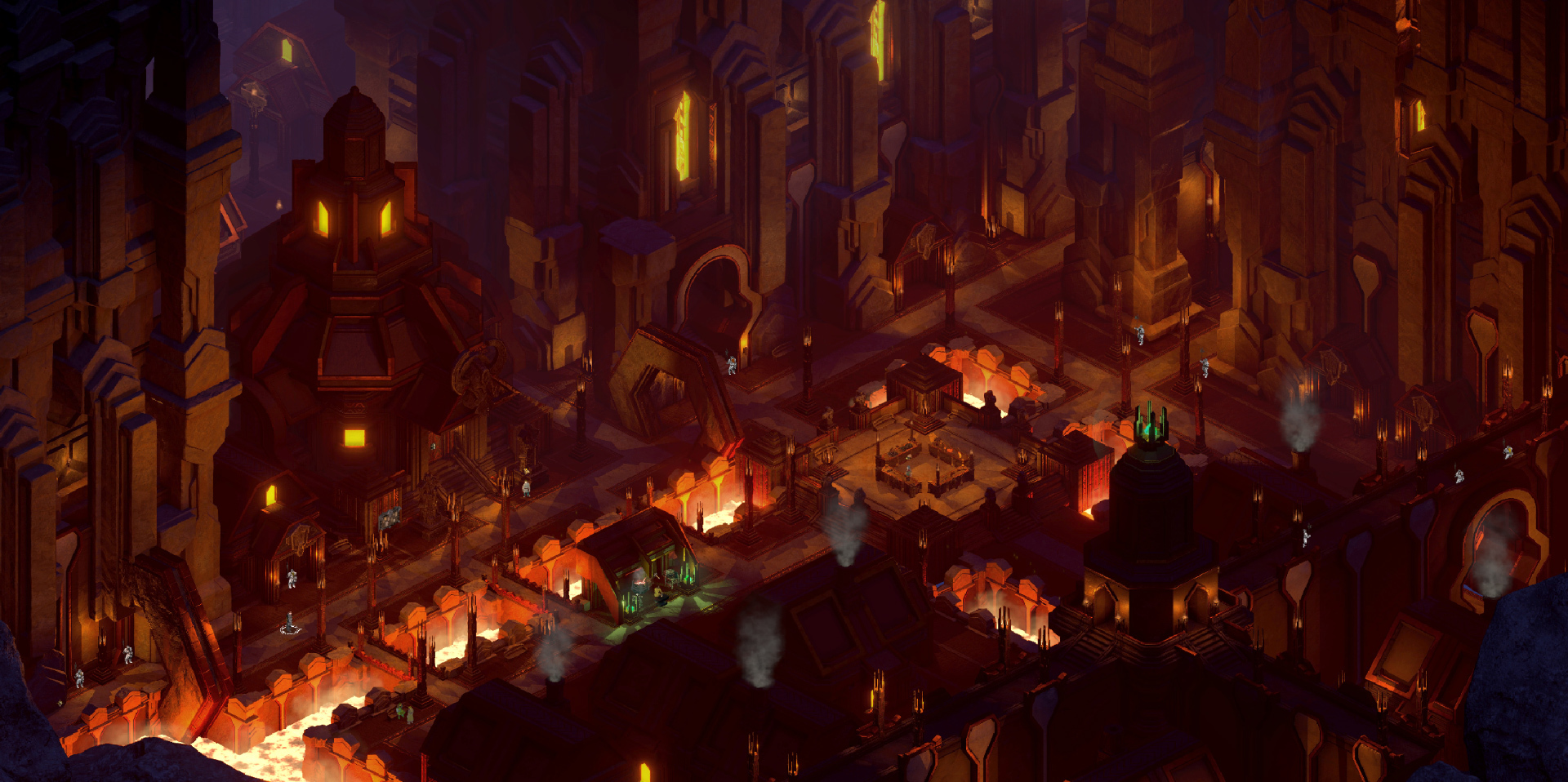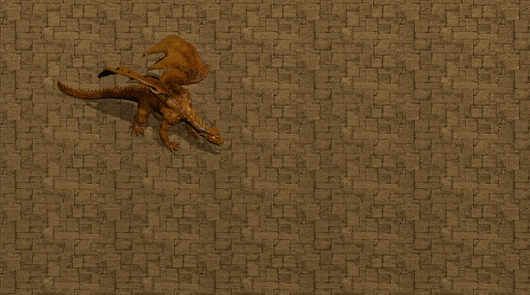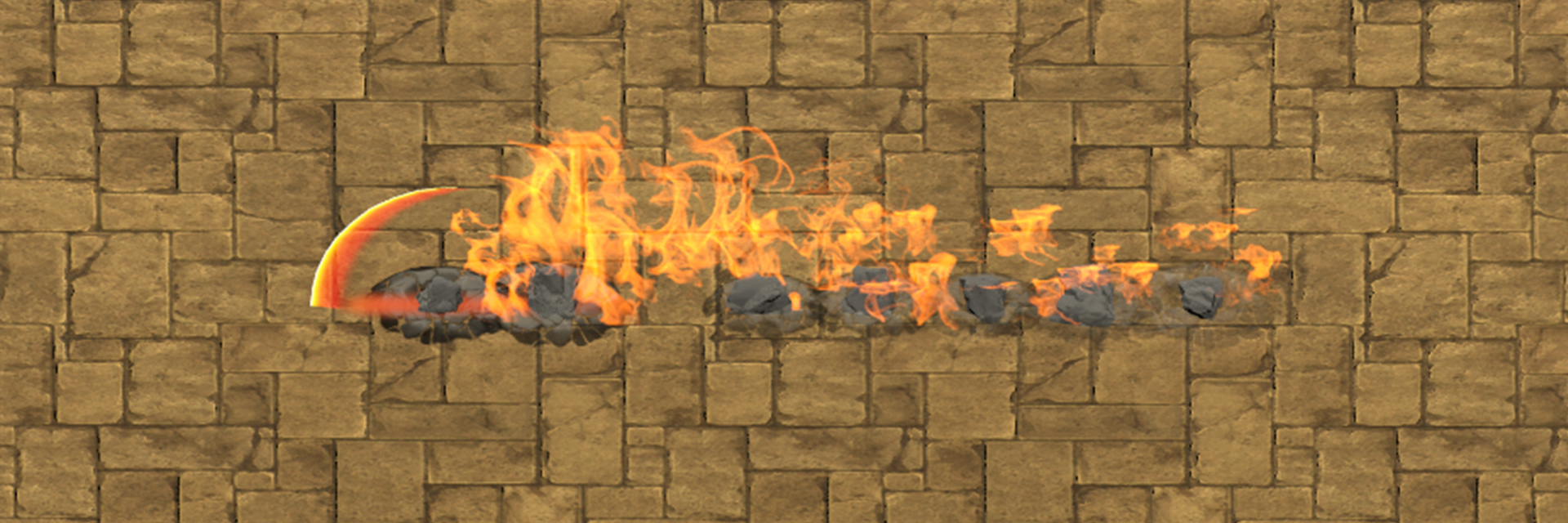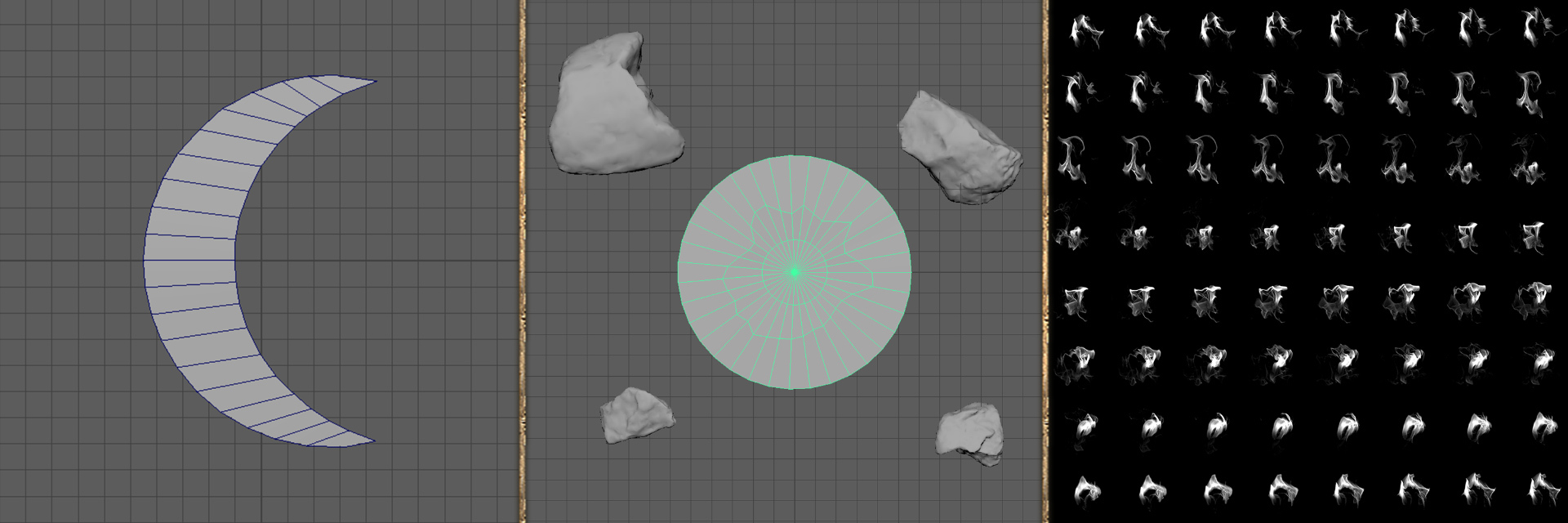The role of VFX is very important in every video game, because they communicate a lot about the things that are happening within a game’s world, from simple rain to a pool of acid, creating and saying what can be good or dangerous, alive or static. Our VFX, are generally divided into two macro categories, environments and gameplay effects. Environments were introduced in Dev Update #2, which explains how, in order to create a live and realistic environment, VFX such as fire, fog, and particles are added. After the bake phase, every single VFX is moved to the final scene in order to have a living scene with fire, water, dust, lava, all weather events, and much more rather than just a static texture. All environmental VFX derive from a common base: for example, each type of dust or flame starts from a base VFX and our team is able to create variants based on the scene in which it will be placed, changing color, size, duration, etc.
For gameplay effects however, the situation changes. These are the VFX that give impact to the game and gameplay. In fact, before starting the production of these effects there was a long pre-production phase between the designers, coders, audio and tech guys, and the animators, all based on a deep knowledge of the project and game mechanics. Similarly to the animation process, we work from a few pre-made libraries to create a base layer of contents to iterate, change, and adapt to the game and we pair these assets with in-house assets created following the specs of the main Game design document or GDD. Libraries are really helpful but, due to the nature of our game, without proper 3D geometry and pre-rendered environments, there is still a lot of work to do even on VFX that are supposed to work 1:1 with a standard pipeline. In Alaloth, we have to manually tweak everything to have the same effect as intended for a full 3D environment. Not an easy task. In-house-made assets work the same way, always starting from a few benchmarks we reimagine working in a iso-view.


For example, for a dragon's breath of fire, we decide at the beginning of the design phase what the range and duration of the attack should be, then we define the damage system with the code/tech department and finally the graphic part, with a mixture of particles and shaders to give life to the flames. But the gameplay effects also help to inform a player of what is about to happen on screen. For example, in many enemy encounters, a loading VFX alerts the player that the enemy is about to cast a spell or use a special skill. Knowing how to create visual effects also means knowing how to use mesh, UV, and shaders to your advantage; these three elements, together with the particles, are the basis for the creation of effects, in addition to being visually important, and give the sense that they are rounding out animations.
This VFX for example is the combination of a series of elements that will give the enemy who will use it (no spoiler) a devastating attack power. It is based on a mesh with UV designed so that a custom shader can create this dynamic effect; in addition a cloud of fire will follow the mesh, together with craters on the ground that will spit tongues of fire and rocks.

Each enemy, from dragon to skeleton, from golem to spider, will have their own unique set of VFX, designed and studied by the whole team to make the experience as realistic as possible. The VFX creation process is variable and depends on functionality and usage. The process can take a few hours for a simple brazier to many more for an attacking gameplay effect, and require a close collaboration between all team members.
Development Update #4 - Creating Real Time VFX in Alaloth
The role of VFX is very important in every video game, because they communicate a lot about the things that are happening within a game’s world, from simple rain to a pool of acid, creating and saying what can be good or dangerous, alive or static.
Posted by AiG_CM on






